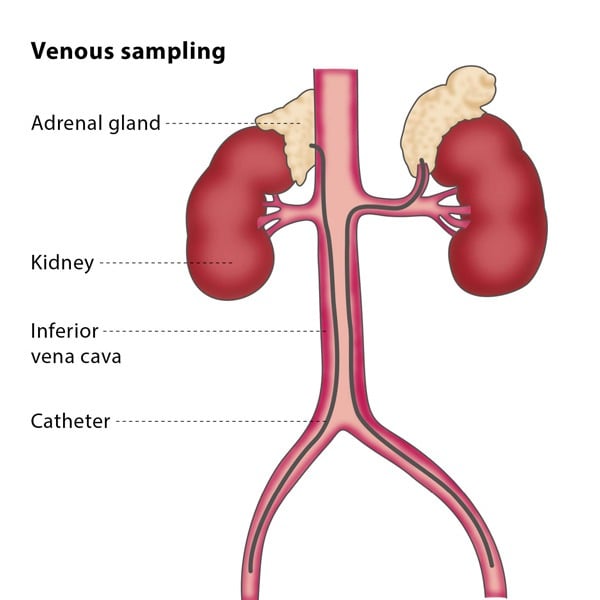What is selective venous sampling?
You may be recommended to undergo selective venous sampling if your doctor would like to find out more about your hormones. The procedure involves taking a sample of blood from a particular area of blood vessels, which is then analysed to see which substances the organs and tissues around it have produced.
The organs most frequently analysed in this procedure are the adrenal glands, the parathyroid glands and pancreas.
How does the procedure work?
The interventional radiologist will insert a 2-3 mm catheter (tube) into a blood vessel in your groin and will then use imaging to guide the catheter to the selected area of veins. The interventional radiologist then takes some samples of blood from these veins, which are immediately analysed to check the levels of particular hormones and other substances.

